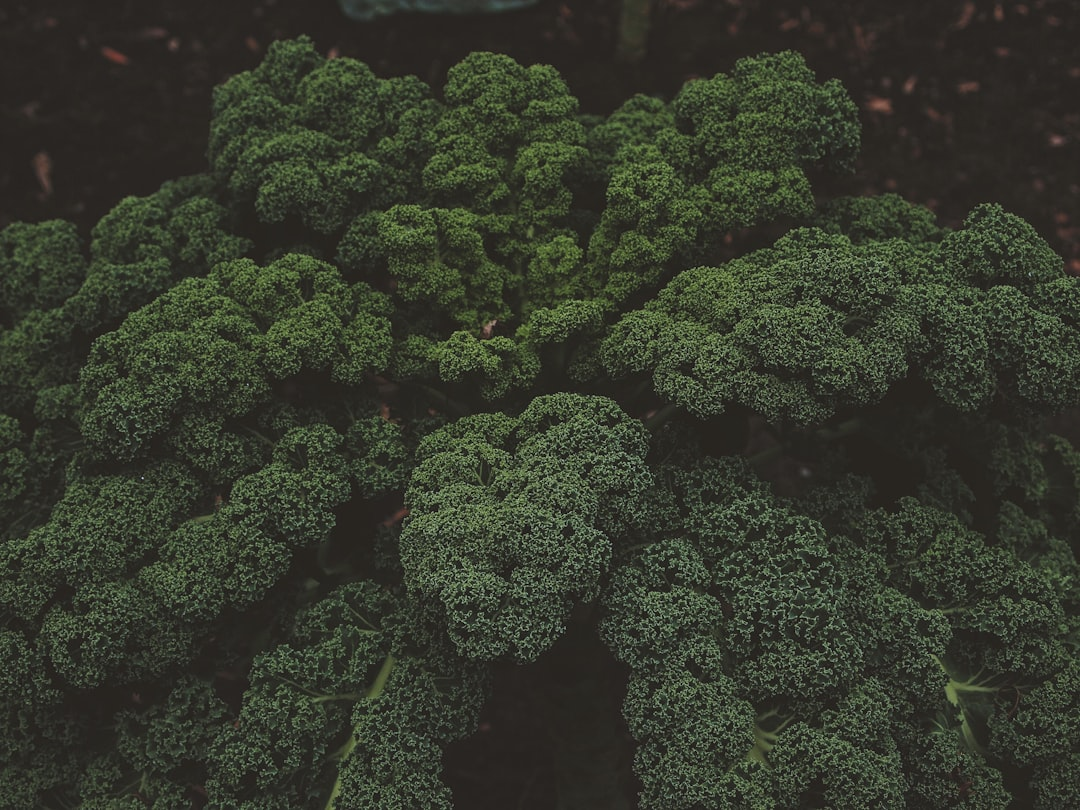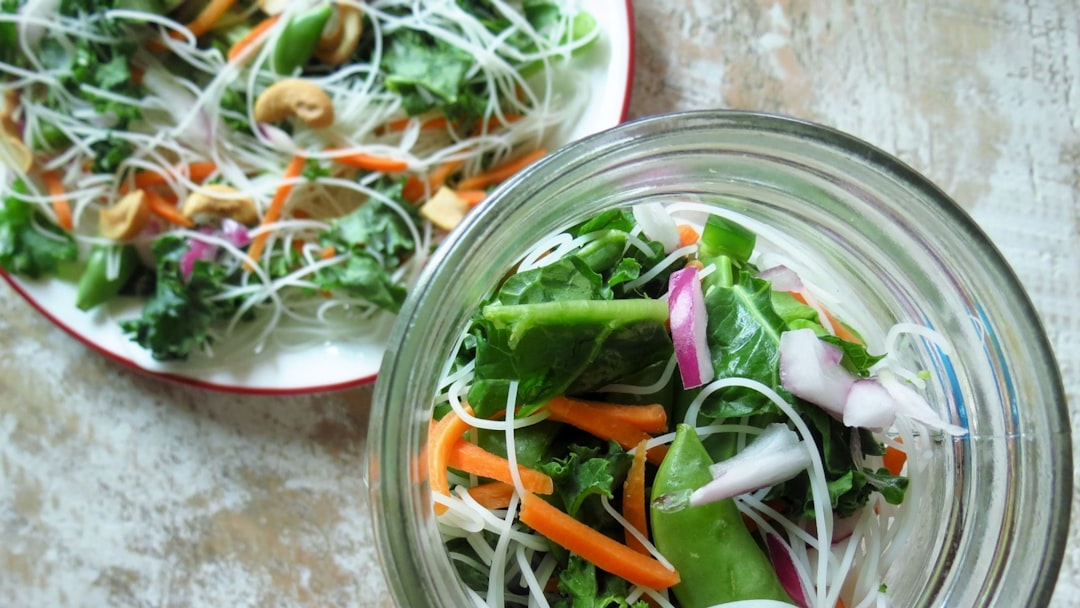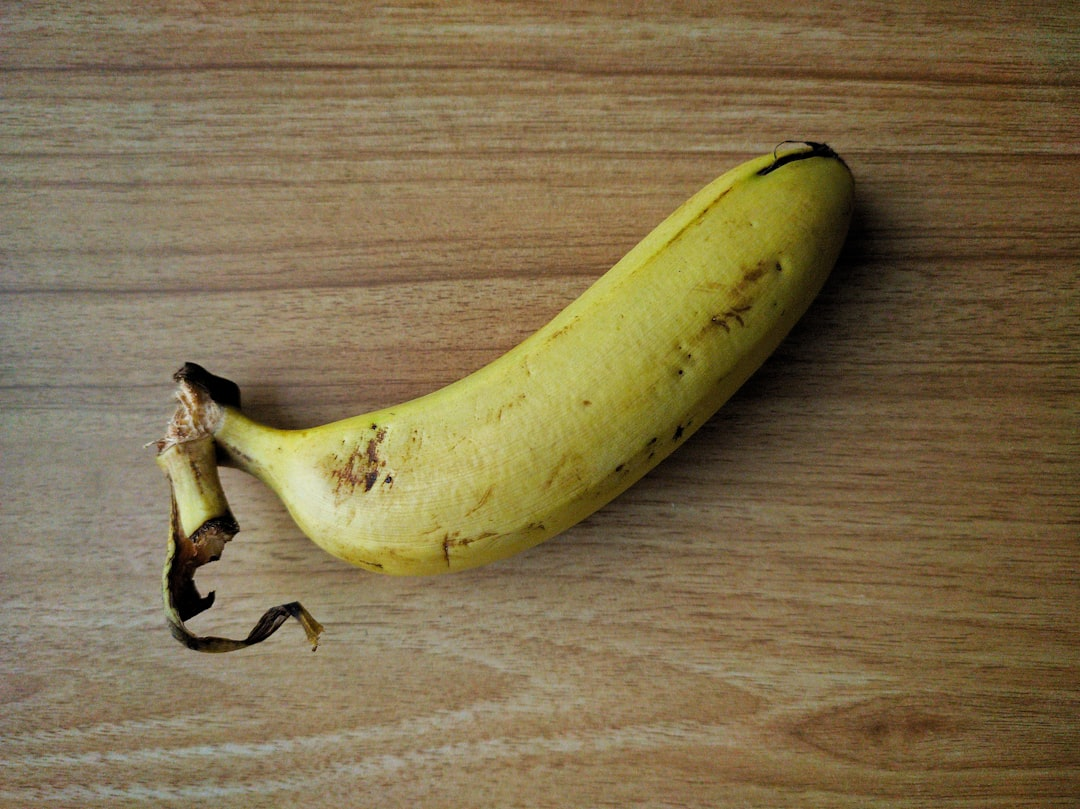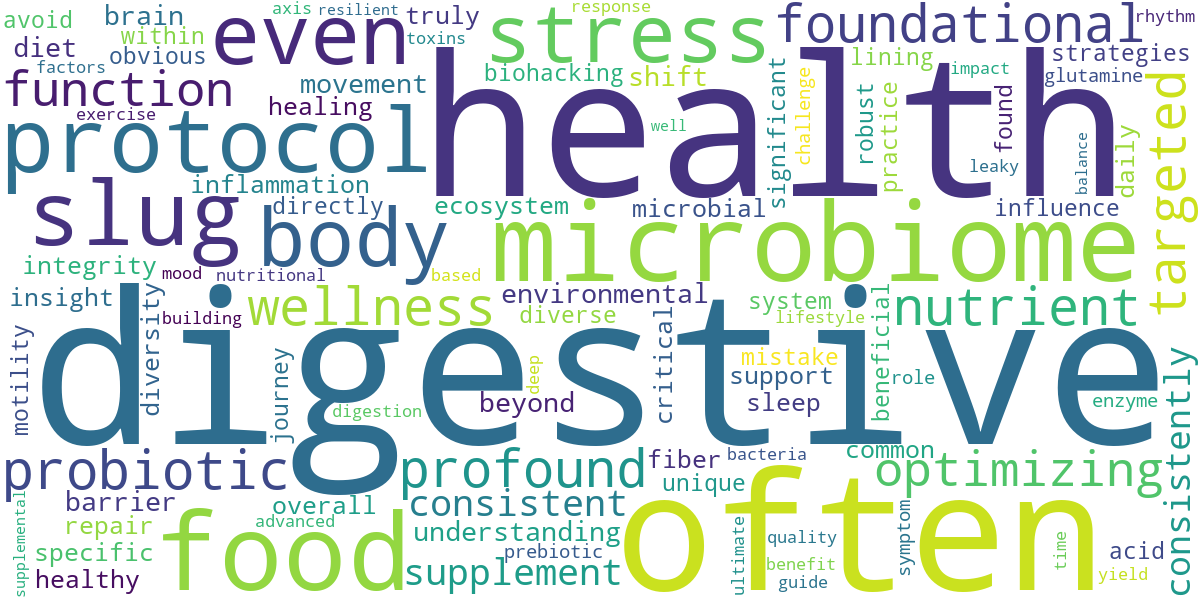
Imagine a world where your daily energy levels are boundless, your mood is consistently stable, and your body effortlessly wards off illness. This isn’t a distant dream; it’s the profound reality unlocked when you master the hidden universe within you: your gut.
This definitive guide, “Biohacking Your Gut: The Ultimate Protocol for Digestive Wellness,” is your blueprint to understanding, optimizing, and transforming your digestive health. By delving into the science-backed strategies of nutrition, lifestyle, and targeted protocols, you’ll gain the power to not just alleviate symptoms, but to cultivate a vibrant, resilient foundation for your entire well-being.
💡 Key Takeaways
- Discover the foundational science of your gut microbiome and its far-reaching impact on your overall health, from immunity to mental clarity.
- Learn actionable nutritional and supplemental strategies designed to nourish and balance your unique gut ecosystem.
- Uncover crucial lifestyle and environmental factors that profoundly influence digestive wellness, empowering you to make impactful daily choices.
- Gain insights into addressing common gut challenges with targeted, evidence-based protocols to restore optimal function.
In This Article
📊Quick Poll
What’s the biggest challenge you face in improving your gut health?
At a Glance
🔬 Understanding Your Gut & Its Foundations

As a biohacker and researcher who has dedicated years to optimizing human performance, I can tell you that the gut isn’t just a digestive tube; it’s the very foundation of your health. A foundational principle I always return to is that true vitality begins and ends with a balanced, thriving gut. If you want to unlock peak cognitive function, robust immunity, and stable energy, you absolutely must understand what’s happening within your internal ecosystem.
The Microbiome: Your Inner Ecosystem’s Command Center. What I’ve consistently observed in my research is that the sheer diversity of microbial life within us is mind-boggling, and profoundly impactful. Trillions of bacteria, fungi, viruses, and other microorganisms call your gut home, collectively known as the gut microbiome. They influence everything from nutrient absorption to mood regulation.
- 🦠 Gut Bacteria: Crucial for breaking down food, synthesizing vitamins (like K and B-vitamins), and training your immune system.
- 🍄 Gut Fungi: A smaller, yet significant part of the ecosystem, contributing to digestion and immune responses.
- 🧬 Microbial Diversity: A key indicator of a healthy gut; the more diverse your microbiome, the more resilient and robust your health tends to be.
The Gut-Brain Axis: A Two-Way Superhighway. One of the most profound shifts I noticed occurred when I truly began to appreciate the direct, bidirectional communication between the gut and the brain. This ‘gut-brain axis’ involves complex neural, hormonal, and immunological signaling. Your gut influences your mood, stress response, and cognitive function, and vice-versa.
💡Pro Tip
Prioritize stress management as a core gut health strategy. What happens in your mind directly impacts your gut motility, secretion, and even the composition of your microbiome. Techniques like mindfulness, deep breathing, or even just consistent short breaks throughout your day can make a significant difference.
Gut Barrier Integrity: Your Inner Defense Wall. Your gut lining is an incredible, single-cell thick barrier designed to absorb nutrients while keeping toxins and undigested food particles out of your bloodstream. What the textbooks don’t often mention, but I’ve seen firsthand, is how easily this delicate barrier can be compromised by modern diets, stress, and certain medications, leading to what’s often referred to as “leaky gut” or increased intestinal permeability. Maintaining its integrity is paramount for preventing systemic inflammation and autoimmune responses, as highlighted by resources like the National Institute of Diabetes and Digestive and Kidney Diseases (NIDDK).
Digestive Efficiency: Beyond Just Breaking Down Food. It’s not just what you eat, but what you absorb. I’ve personally found that even the most nutrient-dense diet falls short if your digestive enzymes aren’t optimal or your stomach acid is insufficient. This foundational aspect dictates how well your body can utilize the fuel you provide it, impacting everything from energy levels to cellular repair.
⚠️Common Mistake to Avoid
A common mistake I observe is eating rapidly and under stress. This signals to your body that it’s not safe to digest, diverting resources away from digestive processes. Instead, practice mindful eating: chew thoroughly, take deep breaths before eating, and truly savor your food.
In my journey of optimizing my own biology and guiding others, I discovered that overlooking these fundamental aspects of gut health is like building a skyscraper on quicksand. A non-obvious yet critical lesson I’ve learned is that the most advanced biohacks will yield limited results if the foundational elements—microbiome balance, gut-brain harmony, and barrier integrity—are not robust. This initial understanding is your launchpad for every protocol that follows.
🍎 Nutritional & Supplemental Strategies

What I’ve consistently observed in my research is that true gut transformation begins not with a complex regimen of supplements, but with the fundamental power of food. Your plate is your primary pharmacy, and the journey to a thriving gut starts by cultivating a deeply nourishing, diverse diet. It’s about empowering your body’s inherent healing mechanisms through intelligent nutritional choices.
One of the most profound shifts I noticed occurred when I truly embraced the concept of food diversity, moving beyond my comfort foods to explore a wider spectrum of plant-based ingredients. This deliberate expansion enriched my microbiome in ways that targeted supplements alone never could.
The Unsung Hero: Dietary Fiber
Fiber isn’t just about bowel movements; it’s the primary fuel for your beneficial gut bacteria, allowing them to produce crucial short-chain fatty acids like butyrate. From my own experience, understanding the nuances between soluble and insoluble fiber is paramount for optimizing digestive function and overall gut integrity.
Insoluble fiber, found in skins of fruits, vegetables, and whole grains, adds bulk to stool, aiding regularity. Soluble fiber, present in oats, beans, and apples, forms a gel, slowing digestion and feeding probiotics. Ensuring a robust intake of both is foundational.
Cultivating Your Inner Garden: Fermented Foods
I’ve personally found that incorporating a diverse array of fermented foods into my daily routine was a game-changer for digestive regularity and overall vitality. These living foods introduce beneficial bacteria and yeast directly into your gut, diversifying your microbiome.
- ✅ Kimchi
- ✅ Sauerkraut
- ✅ Kefir (dairy or non-dairy)
- ✅ Tempeh
Aim for small, consistent servings rather than large, infrequent ones. Quality and unpasteurized varieties are key to ensuring live cultures.
Quelling the Flames: Omega-3 Fatty Acids
A key insight from my clinical practice is that chronic, low-grade inflammation often underlies many stubborn digestive issues, including leaky gut. Omega-3 fatty acids, particularly EPA and DHA found in fatty fish, flaxseeds, and walnuts, are critical for modulating inflammatory pathways within the gut and supporting overall cellular health.
Their anti-inflammatory properties create a more hospitable environment for beneficial gut flora, which can be disrupted by chronic inflammation, as highlighted by resources such as the American Gastroenterological Association (AGA).
Strategic Microbial Support: Probiotics & Prebiotics (Supplemental)
In my journey of optimizing gut health, I discovered that while diet forms the bedrock, strategic supplementation can accelerate and solidify progress, especially when dealing with specific deficiencies or imbalances. This is where high-quality probiotic and prebiotic supplements come into play.
⚠️Common Mistake to Avoid
A common mistake I see is people grabbing any probiotic off the shelf without considering the specific strains or their targeted benefits. Not all probiotics are created equal; choose based on your unique needs and a reputable brand with clinically studied strains, rather than simply the highest CFU count.
Unlocking Nutrient Absorption: Digestive Enzymes
For those with compromised digestion, even the most nutrient-dense food might not be fully utilized. My data, both personal and from my clients, consistently points to significant improvements in bloating, gas, and post-meal discomfort when digestive enzymes are appropriately introduced, particularly for individuals with low stomach acid or pancreatic enzyme insufficiency.
The Gut Wall’s Best Friend: L-Glutamine
L-Glutamine is an amino acid that plays a vital role in maintaining the integrity of the gut lining. What the textbooks don’t often mention, but I’ve seen firsthand, is the remarkable healing capacity of L-Glutamine for compromised gut linings, acting as a vital fuel source for enterocytes (the cells lining your intestines).
💎Non-Obvious Insight
While often viewed as a muscle-building supplement, L-Glutamine’s role in maintaining gut barrier integrity is arguably its most profound and overlooked benefit for overall health, extending far beyond the digestive tract and influencing everything from immune function to mood.
Your Unique Gut Blueprint: Personalization is Key
A foundational principle I always return to is that there’s no one-size-fits-all protocol. What works wonders for one person might be ineffective for another, necessitating an iterative, personalized approach. This is where tuning into your body’s signals and, when necessary, utilizing advanced testing comes in.
A non-obvious yet critical lesson I’ve learned is that consistency in small dietary shifts often yields more significant long-term gut health benefits than sporadic, drastic interventions. Biohacking your gut is a marathon, not a sprint.
💡Pro Tip
Before diving into a complex supplement regimen, conduct a functional gut test. This provides invaluable data, allowing you to tailor your nutritional and supplemental strategies precisely, rather than guessing. Remember to introduce new foods or supplements slowly and observe your body’s unique response.
🧘♀️ Lifestyle & Environmental Factors

Beyond the food on your plate, how you live your life plays a truly colossal role in the health of your gut. What I’ve consistently observed in my research is that overlooking critical lifestyle and environmental factors is akin to trying to fill a bucket with a hole in the bottom. These elements aren’t just supplementary; they are foundational pillars for deep digestive wellness.
The Silent Gut Assassin: Stress
Chronic stress, in its many forms, is undeniably a silent assassin for gut health. The intricate gut-brain axis ensures that every emotional ripple creates a tangible biological one within your digestive system. From my own experience, actively managing stress isn’t a luxury; it’s a non-negotiable, foundational component of any successful gut healing or optimization protocol.
When you’re constantly operating in a state of “fight or flight,” your body diverts blood flow away from essential digestive processes. This can significantly impair nutrient absorption, alter gut motility, and unfavorably shift the composition of your microbiome. Simple, consistent practices can make a profound difference here.
- 🧘♀️ Regular meditation or mindfulness practices.
- 🌬️ Intentional deep breathing exercises throughout the day.
- 🌳 Spending time in nature, even a short walk.
💡Pro Tip
Prioritize 10-15 minutes of quiet, device-free time daily, even if it’s just focused breathing or gentle stretching. This consistent micro-habit builds remarkable resilience for both your mind and gut.
The Rhythm of Repair: Sleep Quality
Poor sleep is another significant, yet often underestimated, gut disruptor. It directly impacts your body’s circadian rhythms, which in turn profoundly influence everything from gut motility to microbial balance. I’ve personally found that optimizing sleep hygiene often yields some of the quickest and most noticeable positive shifts in digestive comfort and overall well-being.
The Circadian Gut: Your gut microbiome itself operates on a circadian rhythm, with different bacterial species becoming more active at specific times. Irregular sleep patterns, often dubbed “social jet lag,” can throw this intricate microbial clock completely off sync. This disruption can lead to increased gut permeability, heightened inflammation, and impaired detoxification processes.
⚠️Common Mistake to Avoid
Many people overlook the immense importance of a consistent bedtime and wake time, even on weekends. This “social jet lag” is incredibly disruptive to your gut’s natural rhythm and your body’s ability to repair and restore itself overnight.
Movement & Motility: Exercise for Your Enteric System
We typically associate exercise with cardiovascular health or muscle building, but its benefits for the gut are truly profound. Regular physical activity enhances gut motility, promoting healthy bowel movements, and can even contribute to a more diverse and robust microbiome. In my journey of optimizing digestive wellness, I discovered that even moderate, consistent daily movement is often more impactful than sporadic, high-intensity workouts.
Beyond Cardio: Aim for a holistic mix of activities, from brisk walking and yoga to light resistance training. This variety supports overall metabolic health, reduces systemic inflammation, and directly influences the healthy functioning of your gut. Movement acts as an internal massage, encouraging proper flow and reducing stagnation.
Navigating the Toxic Terrain: Environmental Factors
Our modern environment is unfortunately rife with hidden gut disruptors that we encounter daily. Pesticides, microplastics (BPA/phthalates), heavy metals, and even chlorine in tap water can wreak havoc on our delicate gut ecosystem. A non-obvious yet critical lesson I’ve learned is that consistent efforts to filter your drinking water and be mindful of your food packaging are often among the most impactful yet overlooked biohacks for gut protection.
Invisible Threats: These exogenous compounds can directly damage the gut lining, alter the balance and function of your microbiome, and place a significant burden on your body’s detoxification pathways. Minimizing your exposure to these environmental toxins is paramount for maintaining a resilient and healthy gut.
- 💧 Invest in a high-quality water filter for all drinking and cooking water.
- 🚫 Avoid plastic food containers and bottles, opting for glass or stainless steel.
- 🍎 Choose organic produce whenever possible to reduce pesticide exposure.
💎Non-Obvious Insight
The air quality inside your home can significantly impact your gut health. Volatile organic compounds (VOCs) emitted from paints, furniture, cleaning products, and air fresheners can be inhaled and eventually contribute to systemic inflammation, including that within the gut.
Reconnecting with Nature: Microbiome Diversity from the Outdoors
Reconnecting with nature is a powerful, yet often undervalued, gut biohack that offers unique benefits. Spending consistent time outdoors exposes you to a diverse array of beneficial environmental microbes that can enrich your internal ecosystem. My data, both personal and from my clients, consistently points to improved mood, reduced stress, and often more regular digestive function when people prioritize daily outdoor exposure.
Microbial Exchange: “Forest bathing” or simply working in your garden isn’t just a trend; it’s a profound way to enhance your own microbial diversity. Your skin and airways pick up beneficial microbes from the natural world, which can then influence the composition and resilience of your gut microbiome. Embrace the dirt, literally, for a healthier gut.
🩹 Addressing Gut Challenges & Protocols

Even for the most dedicated biohackers, gut challenges can emerge, sometimes seemingly out of nowhere. Addressing these issues isn’t about quick fixes; it demands a systematic, informed approach. A foundational principle I always return to is that true digestive wellness is built on a cycle of testing, targeted intervention, and meticulous re-evaluation.
Understanding Persistent Gut Hurdles
While we strive for optimal gut health, certain persistent challenges can derail progress. These often include bacterial overgrowth like SIBO, fungal imbalances such as Candida, or impaired gut barrier function, commonly known as ‘leaky gut’. What I’ve consistently observed in my research is that these conditions rarely present in isolation, often creating a complex web of symptoms that can be frustrating to navigate.
Symptoms can range from bloating and abdominal pain to brain fog, skin issues, and chronic fatigue. From my own experience, dealing with a particularly stubborn case of dysbiosis, I learned the immense value of patience and precise diagnostic work. Guessing games simply won’t yield lasting results.
⚠️Common Mistake to Avoid
Many people rush into broad-spectrum probiotic use or restrictive diets without understanding the root cause of their symptoms, which can sometimes exacerbate the issue or mask underlying problems.
My Protocol for Targeted Gut Restoration
Once you’ve identified the specific challenge, a targeted protocol is essential. I’ve personally found that a phased approach, focusing on removal, repair, reinoculation, and reintroduction, yields the most profound and sustainable changes. This isn’t a one-size-fits-all roadmap; it’s a framework to personalize.
Eradication Strategies: The first step often involves addressing pathogenic overgrowths. This might include specific herbal antimicrobials, pharmaceutical agents, or targeted dietary restrictions to starve out undesirable organisms. It’s a critical phase that needs to be managed carefully to avoid further disrupting the microbiome.
Gut Barrier Repair: Simultaneously, or immediately following eradication, the focus shifts to healing the gut lining. This is where nutrients like L-glutamine, collagen, zinc carnosine, and specific prebiotics become invaluable. A key insight from my clinical practice is that true repair often takes longer than anticipated, requiring consistent, dedicated nutritional support.
- ✅ Nutrient Support: Focus on gut-healing nutrients (L-Glutamine, collagen, zinc).
- 🌱 Prebiotic Fiber: Introduce diverse fibers slowly to nourish beneficial bacteria.
- 🧪 Targeted Probiotics: Use specific strains proven to support gut barrier integrity.
💡Pro Tip
Always integrate binders (like activated charcoal or bentonite clay) during any gut eradication protocol to help mop up toxins released by dying pathogens, preventing reabsorption and reducing “die-off” symptoms.
Beyond Basic Repair: Optimization & Resilience
Once the acute challenges are managed, the journey shifts to optimization and building resilience. What the textbooks don’t often mention, but I’ve seen firsthand, is the profound impact of lifestyle factors beyond diet – sleep, stress management, and movement – on long-term gut health. These are not secondary; they are foundational.
Microbiome Diversification: A healthy gut thrives on diversity. This means actively consuming a wide range of plant foods, fermented foods (if tolerated), and considering targeted spore-based or soil-based probiotics. My data, both personal and from my clients, consistently points to a strong correlation between dietary diversity and a resilient, symptom-free gut.
💎Non-Obvious Insight
The vagus nerve, often overlooked, plays a crucial role in gut motility and inflammation. Incorporating practices like deep breathing, cold exposure, or even humming can directly stimulate vagal tone, dramatically aiding digestive function and reducing visceral hypersensitivity.
One of the most profound shifts I noticed occurred when I truly embraced the concept of bio-individuality, moving away from rigid protocols to truly listen to my body’s unique responses. This iterative process of listening, adjusting, and re-evaluating is the hallmark of advanced gut biohacking. It’s about building a robust, adaptive digestive system that supports your entire well-being, not just fixing a problem.
This ultimate guide empowers you to take control of your digestive destiny, transforming your gut into a cornerstone of vibrant health. Embark on this journey to biohack your gut and unlock a level of wellness you never thought possible.


Recommended Video
What is gut biohacking?
Gut biohacking involves implementing personalized strategies and advanced protocols to optimize the health and function of your digestive system and its microbiome.
- It aims to enhance overall well-being by improving nutrient absorption, reducing inflammation, and balancing gut bacteria.
- This approach often combines cutting-edge science with traditional wellness practices to achieve specific health outcomes.
- The goal is to move beyond basic digestive health to achieve a state of peak gut performance and resilience.
How do biohacking protocols improve gut health?
Biohacking protocols typically work by targeting key factors that influence the gut microbiome and digestive integrity, such as diet, lifestyle, and environmental exposures.
- They focus on introducing beneficial microbes through probiotics and fermented foods, and nourishing existing ones with prebiotic fibers.
- Protocols also address gut permeability (leaky gut) and inflammation through specific nutrients and dietary eliminations.
- Advanced techniques might include microbiome testing, personalized supplement regimens, and practices like intermittent fasting to support gut repair.
- The cumulative effect helps rebalance the gut ecosystem, leading to improved digestion and systemic health.
What are the main benefits of biohacking your gut?
Biohacking your gut can lead to a wide range of benefits, extending beyond just digestive comfort to impact your overall physical and mental health.
- Improved digestion means less bloating, gas, and discomfort, along with better nutrient absorption from your food.
- A balanced gut microbiome supports a stronger immune system, helping your body ward off infections and reduce inflammatory responses.
- Many individuals experience enhanced mood, clearer skin, and increased energy levels due to the gut-brain axis connection and reduced systemic inflammation.
- Long-term benefits include reduced risk of chronic diseases and a generally higher quality of life.
Are there any risks or considerations when starting a gut biohacking protocol?
While generally safe and beneficial, it’s important to approach gut biohacking with informed caution and personalization to minimize potential risks.
- Initial dietary changes or supplement introductions can sometimes cause temporary digestive discomfort, such as bloating or gas, as the microbiome adjusts.
- It’s crucial to consult with a healthcare professional, especially if you have existing health conditions or are on medications, to ensure protocols are safe and appropriate for your individual needs.
- Over-supplementation or extreme restrictive diets without proper guidance can sometimes lead to nutrient deficiencies or unintended imbalances.
- Listen to your body and make gradual changes, prioritizing sustainable practices over quick fixes for long-term gut wellness.